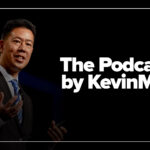A few weeks ago, I delivered a baby in the morning and sat with a grandmother near the end of life that afternoon. I adjusted insulin for a patient I first helped quit smoking ten years ago. I counseled a teenager about to leave home for college. This is the joy of family medicine: walking with people through every stage of life. But too often, that joy is overshadowed by a system that undervalues the very work that keeps it alive.
I have been a family physician for twenty-two years, trained residents for nineteen, and served as a program director for nine. Alongside colleagues in pediatrics and internal medicine, I have seen how primary care strengthens communities. We catch disease early, support mental health, guide families through crisis and celebration, and build trust that makes care possible. Strong primary care is not just important; it is the backbone of a functional, compassionate, and cost-effective health care system.
And right now, that backbone is breaking.
The 2025 Residency Match revealed another drop in U.S. seniors choosing primary care, even as the number of training slots reached record highs and as the nation faces grim primary care workforce shortages. Fifteen percent of family medicine positions offered in the Main Match went unfilled. Pediatrics and internal medicine also experienced downward trends.
This is not just a workforce crisis; it is a wake-up call. Without a robust primary care workforce, patients face longer wait times, more ER visits, worsening outcomes, and rising costs. Most importantly, we risk losing the kind of care that treats people as people, not billing codes.
Medical students start school with passion for service and health equity. They want to make a difference. Yet too often, by Match Day, they have been quietly nudged away from primary care.
They see the long hours, high debt, and lower salaries. They absorb the hidden curriculum that prizes subspecialty prestige and dismisses primary care as “too broad” or “too basic” – when in truth it requires mastery of breadth, resilience, and relationship. They see a health system that relies on primary care but refuses to sustain it.
If we are serious about health equity, physician well-being, and innovation, then primary care cannot remain on the margins. It must be central to our mission.
One of the greatest strengths of primary care is continuity. I have delivered babies and cared for them through adolescence. I have supported patients through addiction, recovery, grief, and healing. I have cared for multiple generations of a single family. These relationships create trust, improve outcomes, and sustain physicians in a profession too often marked by burnout.
Yet many students never witness this kind of care. As educators, we can change that. Academic centers should build more longitudinal primary care experiences early in the curriculum, expand community-based partnerships, and ensure students see primary care clinicians not just in clinics, but in leadership and scholarship roles.
Imagine AI that takes over documentation, prior authorizations, and inbox overload, giving us back precious time for patients. Imagine predictive tools that help identify patients at highest risk of being lost to follow-up, or simulation platforms that enhance how we train residents. These tools are rapidly emerging. But no algorithm can replace the therapeutic power of knowing your patient over years. That is why primary care physicians must help shape them.
Reversing the decline in interest and capacity for primary care will require more than words. It demands action. We need:
- Visibility: Primary care clinicians elevated as leaders, mentors, and innovators in research, education, and policy.
- Support: Funded pipeline programs, residency partnerships, and primary care departments.
- Reform: Payment models that reward comprehensive, relationship-based care, not just procedures.
- Employment alignment: Health systems that hire physicians into roles that let them use their full scope.
At this moment, when trust in medicine is fragile and disparities are widening, primary care offers a way forward. It is real, relational, and essential.
After nearly two decades, I can say without hesitation: family medicine is the best job in the world. It is demanding, yes (but also profoundly meaningful and joyful). I have taught students and residents who have gone on to transform care in rural towns, urban clinics, academic health centers, and community hospitals. But we need more.
We need institutions (from my home institution Stanford to health systems nationwide) to make primary care not just possible, but celebrated. And we need physicians to keep showing students the beauty of continuity, the resilience of breadth, and the joy of relationships that span years.
Primary care is not an afterthought. It is the front line, the safety net, and the heart of health care. If we want health care to heal, we must keep it strong.
Grace Yu is a modern-day “old-fashioned family doc” who enjoys caring for patients from cradle to grave. She is a clinical associate professor at Stanford University in the Division of Primary Care and Population Health and has directed the Stanford-O’Connor Family Medicine Residency Program since 2016. A graduate of Harvard (BA) and Stanford (MD), she has practiced and taught full-spectrum family medicine, including obstetrics, since 2006. Dr. Yu is deeply engaged in medical education and advocacy, having served on the board of the California Academy of Family Physicians and currently as president-elect of the Association of Family Medicine Residency Directors, the national organization representing more than 810 family medicine residency programs across the United States. Her scholarly work has focused on transforming faculty evaluations in competency-based medical education, addressing COVID-19 immunization disparities through primary care outreach, and exploring the qualities of resident teachers most valued by medical students.



















![Why modern dentists must train like pilots [PODCAST]](https://kevinmd.com/wp-content/uploads/Design-3-190x100.jpg)

![A lawyer’s essential checklist for physician side hustles [PODCAST]](https://kevinmd.com/wp-content/uploads/Design-1-190x100.jpg)
